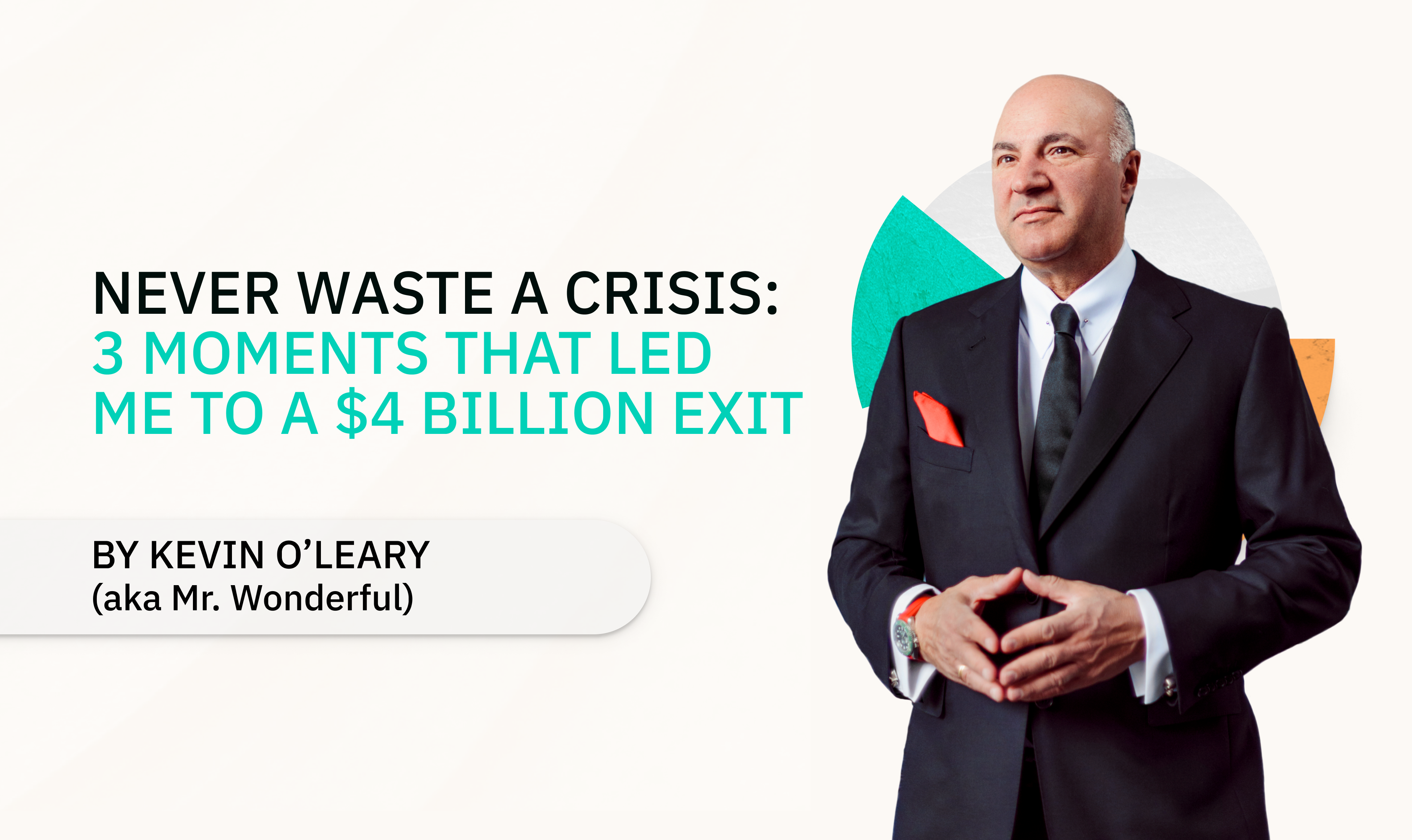NEVER Waste a Crisis: 3 Moments That Led Me to a $4 Billion Exit
Mr. Wonderful here –
Did you ever wonder how I got to be, well, Mr. Wonderful in the first place? I can tell you it didn’t happen overnight. And although these days I’m famously always right, there were a lot of moments when I was starting out that it seemed like everything may crash and burn. But even as a young buckaroo founder, I never wasted a crisis. If you’re smart, you’ll take some lessons from this story, and you won’t either.
Starting SoftKey – a lesson from TV.
In 1986, I had just sold my first company, Special Events Television (SET). Now, SET worked primarily in sports broadcasting, and a major pain point for the industry back then was graphics. Remember this was before the days when you could design a logo on your tablet. At that time, graphics had to be created manually, in a very expensive process using a device called a plotter.
Did I have a solution? No. But after selling my company, I started taking night classes where I met a man named John Freeman. In his spare time, John did some computer programming, and he had created software that could run plotters automatically.
Step back and ask yourself: what do businesses do, fundamentally? They solve problems for people, and John’s software promised to solve a BIG problem for A LOT of people. So, I suggested we form a partnership – he would write code, and I would travel to plotter manufacturers to try to convince them to bundle our software with their product.
Crisis #1 – what to do when you don’t find the Holy Grail.
The first meeting I set was with Hewlett Packard. I was lucky to get it too because they were the largest plotter manufacturer in the world. If you’re thinking this is the part where I tell you I made a massive sale and la-dee-dah, you’re dead wrong.
They laughed me out of the room. And why shouldn’t they? After all, Hewlett Packard was number one – why would they burn margin to acquire market share when they already had a corner on the market?
Well, the Holy Grail isn’t the only cup in the world – so I pivoted and sold the software to Hewlett Packard’s competitors instead, and they ate it up. Why? By bundling our software with their product, all of a sudden the little guys had an edge over the number one player. And although we only made about ¢12 on each copy of our software, we sold millions of them.
Crisis #2 – you can learn a lot from cat food.
As the business took off, we got backing from outside investors (this was long before the days of Shark Tank or equity crowdfunding, but you’d better believe my pitch had the same three elements I expect to hear from any other founder). Eventually though, we had enough money to acquire and take the name of another software firm – The Learning Company.
After the acquisition, our product line was mainly centered around educational programming (think writing, reading, and math). But like every other software company at the time, we had a big problem: our development costs were through the roof and each program we published cost millions in R&D.
Now, years earlier when I was still a student, I had taken an internship for Nabisco working on their cat food line. Back then, Nabisco sold over 20 flavors of kitty chow. But did they have 20 individual recipes? Not at all. They had two – one with a chicken/beef base and the other with a tuna base. What they were actually doing to get all those flavors was adding extra ingredients at the very end of the manufacturing process.
The solution for The Learning Company: we had to streamline our cat food. You never know when a past experience will come in handy, and like a lightbulb, I realized the Learning Company needed to do for software what Nabisco had done for cat food. So, instead of developing each new software package from the ground up, we consolidated our product line into two platforms – one for reading and the other for math.
This drastically reduced our cost of capital. It also allowed us to start acquiring more firms, then sprinkle their products on top of our two platforms, much like the extra ingredients in Nabisco’s recipes.
Crisis #3 – keep your head on a swivel and know when to pivot.
In the early 90s, The Learning Company was selling its Reader Rabbit early reading program for around $129 retail. Sounds pricey? Yeah, it was – our margins were very attractive too. Keep in mind though, that at that point your typical desktop computer cost upwards of $3,000. That is of course until it didn’t.
Along came Michael Dell with a bold vision to sell PCs for less than $1,000. Suddenly, buying one of our programs meant spending over 10% of the price of your computer. You don’t have to be a Shark to see that we had a serious problem.
You can’t be blinded by success and you have to know when to pivot. We needed to change our pricing structure, but we didn’t want to torpedo our existing distribution channels. So I went on to the TV shopping network QVC and sold a package of five of our programs for just under $40. Think about that for a moment: from close to $130 for one unit to less than $40 for five – that’s an over 90% reduction in price.
The result? We sold out in minutes. We did more than that too – we also caught the attention of a buyer from Walmart, who placed an order for close to 12 million CD-ROMs at around $14 per unit. That purchase didn’t just change The Learning Company, it paved the way for the entire software industry to become commoditized. And the volume we started selling led us to a $4+ billion valuation by the end of the decade when we were bought out by Mattel.
The takeaways:
Nowadays, founders have all sorts of tools at their disposal that I didn’t have when I started. One that I’m particularly fond of is equity crowdfunding because it can help you grow your business while you acquire shareholders. That’s especially important to save time in the crucial early days. But it doesn’t change the fact that taking a company from your basement to a liquidity event is war – so make it easier on yourself where you can and learn from my story:
- Odds are Plan A is going to fail and you won’t find your Holy Grail. That’s when you get smart and start looking for other cups.
- Don’t discount your early experiences – they could lead to your cat-food moment and help make your idea a reality.
- Just because something is working now, doesn’t mean it always will; you have to know when to pivot.
Kevin O’Leary is a paid spokesperson for StartEngine. View the details here.











